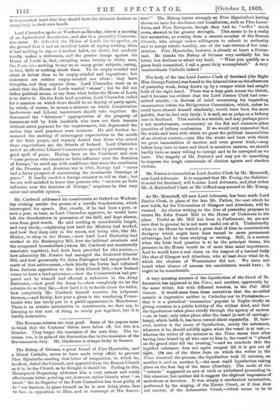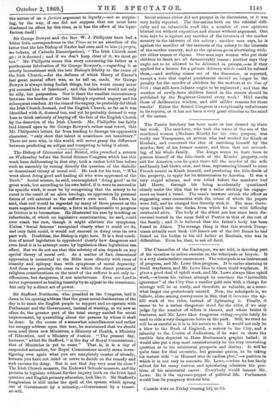A very amusing account of the liquefaction of the blood
of St. Januarius has appeared in the Times, and another, apparently by the same writer, but with different touches, in the Pall Mall Gazette. It would seem from these narratives that the so-called miracle is impressive neither to Catholics nor to Protestants,— that it is a periodical 'transaction' popular in Naples chiefly as giving occasion to a public holiday of the wildest kind, and that the liquefaction takes place chiefly through the agency of motion —or, at least, only takes place after the vessel (a sort of carriage- lamp), which holds it, has been turned abbot repeatedly. If, how- ever, motion is the cause of liquefaction, surely the substance, whatever it be, should solidify again when the vessel is at rest,— whereas the writer of the account in the Times states that after having been kissed by all who care to kiss it, the vessel is "placed on the grand altar till the evening,"—and we conclude that the liquified substance does not again congeal till it is put out of sight. Ott one of the three days on which the writer in the Times observed the process, the liquefaction took 13 minutes, on another 9, and on another 6,—the most rapid liquefaction taking place on the first day of the three (Sunday). The mode of the " miracle " suggested no sort of trick or underhand proceeding to this observer, but neither did it suggest the slightest impression of sacredness or devotion. It was simply a mechanical incantation, performed by the singing of the Nicene Creed, or if that does not answer, of the Athanaaian Creed,—which seems to be in
the nature of an a fortiori argument to liquefy,—not so surpris- ing, by the way, if one did not suppose that use must have deadened its effect by this time, as it has the effect of the lique- faction itself































 Previous page
Previous page